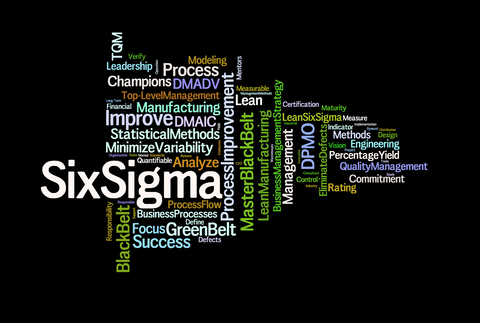For organizations to gain and maintain a competitive advantage, there’s a constant need for the…

In order to achieve the desired results all the time, there has to be a recipe for success. The same is true when it comes to continuous improvement (kaizen) in lean, whether it is in the manufacturing, health or human resources industry. That is where standard work or standardized work comes in.
As the co-founder of TPS (Toyota Production System), Taiichi Ohno, said, “Without standards, there can be no Kaizen.” This is a powerful statement that should drive all organizations to fully embrace the concept of standard work, but that is not happening.
Let us look into just how important standard work is to continuous improvement. But before we do that, let us define it.
What Is Standard Work?
When producing goods or services, standard work is the best method that has been shown to produce the desired results. Once the best method to achieve success has been demonstrated, everyone who wants to achieve the same results would have no choice but to use that method.
The person or team that came up with the method must then produce documentation (a sort of recipe). This means that every operator involved in the production of the goods and services would have to rely on this recipe when producing them.
As such, standard work becomes the core of continuous improvement.
If standard work is not laid out as the basis of kaizen, an organization can face problems. These include failure to achieve consistent operations, solve problems effectively, establishing a culture of process improvement and making lean improvements stick.
And since process improvement is never-ending, the same is true for standard work.
Elements of Standard Work
There are three elements that need to be present in order to establish standard work and produce the necessary documentation.
- Takt Time – The rate at which operators can produce the goods or services in a process in order to satisfy demand.
- Precise Sequence – These are the exact steps the operator used within takt time.
- Standard Inventory – Things required for the smooth operation of the process, this includes things like manpower and machines.
Benefits of Standard Work
When done right, standard work provides the following benefits:
Easier Training of New Employees
Documentation is at the heart of standard work. With every step meticulously recorded, new employees will have a handy guide book of standardized principles they can use to quickly understand how to operate the process. This eliminates the need for resource-intensive training sessions.
Reduction of Waste
Many companies producing goods and services are dealing with waste on a daily basis. By using standard work, waste can be reduced to the point it is almost negligible in the production flow. In fact, a significant portion of the wastes can be eliminated by front-line supervisors and engineers in the process’ design stages, lessening the burden of operators in the production stage.
Establishes a Baseline for Process Improvement
Process improvement is never-ending, and it needs to be something that should be done regularly. Standard work is what establishes a baseline for future improvement efforts. Instead of starting from scratch, an organization can fall back and build on previously-established best practices.
Reduces Operational Costs
When a process has been standardized, you will identify the bottlenecks and come up with a well-defined plan of action to keep the process flowing with minimal work. This means you will not have to stop the process entirely and allocate the maximum amount of resources needed to eliminate the bottleneck, which can be costly.
Increases Customer Satisfaction
Customers expect quality value on a consistent basis. With waste reduced to the absolute minimum, an organization can deliver consistent value to customers that can even exceed their expectations.
Conclusion
You can’t expect your continuous improvement efforts to yield significant results if there is no standardization. Once you know what works, you need to document it and use it for further improvement efforts (continuous improvement) to keep getting the desired results or better.




Comments (0)